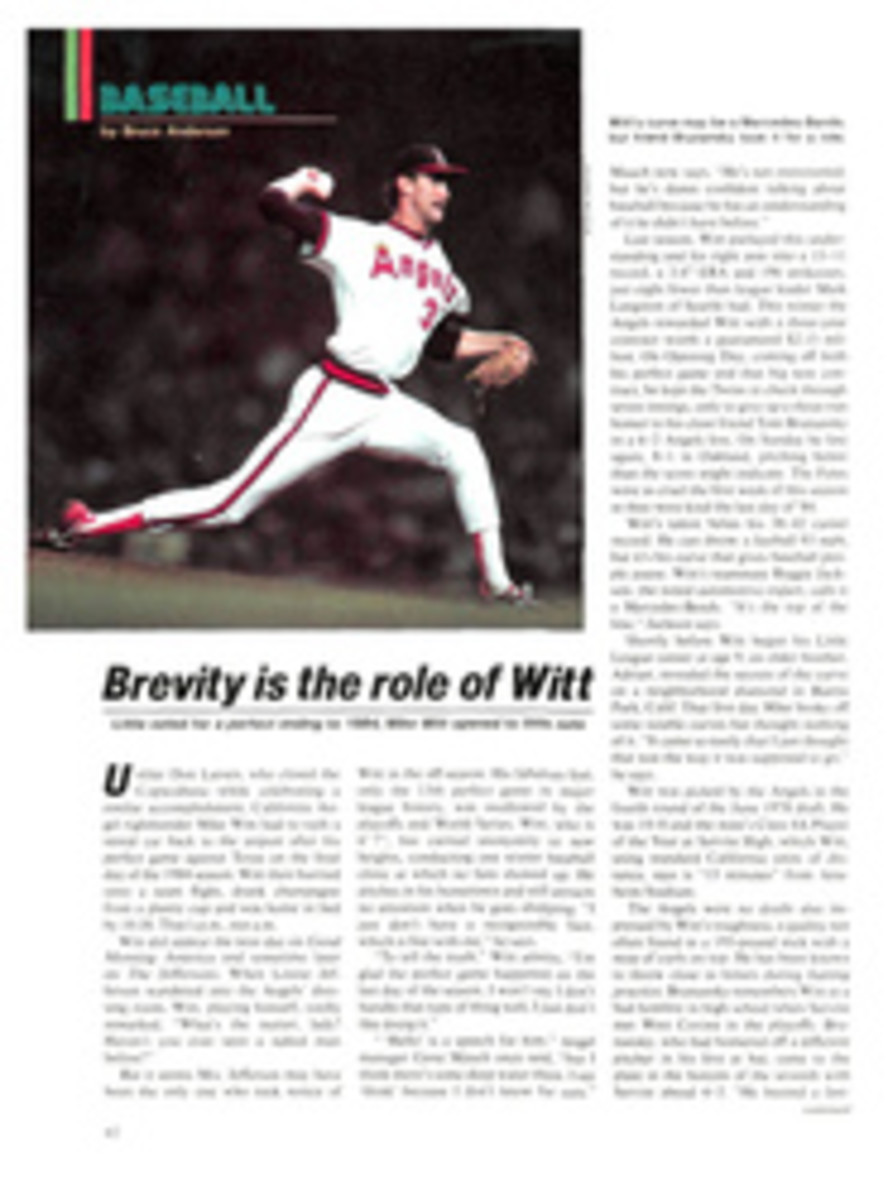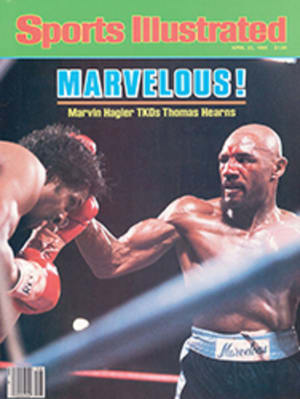
Good to the very last drop
For two qualifying days and 58 of the 90 laps in Sunday's 150-mile Long Beach Grand Prix, the story was familiar: No one could touch Mario Andretti and his bright red Lola. He had qualified on the pole with a track-record 92.190-mph lap and had run off from the other 27 competitors. However, Indy car racing's new fair-haired boy, Danny Sullivan, working from his ninth-place grid position, gradually closed in on Andretti. After 10 laps Sullivan had moved to sixth; after 20, fifth; 30, fourth; 40, third; 50, second. Then, on the 59th lap, Sullivan passed Andretti and raced away to a 15-second lead, weaving aggressively through traffic.
Meanwhile, Andretti cruised around as if he were on vacation. But things are not always what they appear to be in motor racing. The cockpit of an Indy car has a knob that controls the turbocharger boost, and a driver can dial himself the desired amount of horsepower. Andretti, the old pro, had been adjusting his knob downward, thus saving fuel. He would make only one pit stop during the race.
Andretti breezed back into the lead on Lap 79, while Sullivan was making his second pit stop. Andretti ultimately won by a whopping 60.1 seconds, at an average speed of 87.7 mph. At the finish, barely a whiff of methanol remained in his 40-gallon tank. Emerson Fittipaldi came in second in a March after trying the same tactic as Andretti, but he had to sputter into the pit for a top-up on the next-to-last lap. In spite of his two refuelings, Sullivan nonetheless ran out of fuel on the final corner and, with the help of a track worker, had to push his March some 120 yards to the finish line to place third.
His disappointment notwithstanding, Roger Penske, Sullivan's boss, was pleased. "The kid was running the heck out of the car, and that's what you're supposed to do," said Penske. "Now all we've got to do is figure out how to get him better mileage."
Andretti now has three Long Beach victories, including his flag-to-flag romp in 1984, which was his best season since he won the world Formula One championship in 1978. Last year he and his Lola—owned by Carl Haas and Paul Newman, by far the best 60-year-old race driver in the country—won six races, eight pole positions, the CART/PPG championship, the Eljer Driver of the Year award and a record $931,929 in prize money. Along the way Andretti also set 10 track records. And then things got even better. Over the winter, the team picked up a new sponsor, Beatrice Companies, Inc. Haas won't say how much the three-year deal is worth, but it's in the tens of millions and is the richest in the history of racing.
Despite his wealth, Andretti is still angry at the Penske team. The bitterness began in 1981, a year after he left Penske, when Penske driver Bobby Unser beat him in the Indy 500 both on the track and again in a USAC court of appeals. So you can imagine what Andretti must have been thinking moments before Sullivan passed him. He was stuck behind Al Unser Sr., who was in fifth place in a second Penske car. Andretti was sandwiched by his enemies; one of them was slowing him down, the other was getting ready for the kill.
Afterward Andretti said, "I'll tell ya, they're tough guys. They're not the guys with the white hats. They have no mercy on you."
But don't tell Sullivan's fans or his press agent or Penske that his hat is black. "Boy, did I make a good move when I hired him," said Penske after the race, Sullivan's first for him.
Sullivan is the emerging driver on the circuit, no question, as well as the prototype of the race driver of the future. The sport has never had a smoother spokesman. Further, his talent often shines brightest when the driving gets tough. He has earned every one of his recently sprouted gray hairs, for Sullivan has paid his dues. He did his share of starving to get where he is.
Sunday, however, belonged to Andretti, who won the race with his head, not just a lead foot. His radio had misfunctioned—he could talk to his crew but couldn't hear them—so the decision to drive conservatively and stretch his fuel had been all his. "I said this is what I'm doin', and I did it," he said.
"Mario's got a sixth sense with things like that," said one of his crew members. "He can feel the fuel. He has an uncanny instinct about how far he can go."
Chalk this one up to experience.
TWO PHOTOS
RICHARD MACKSON
Andretti was elated, Sullivan stoic after their duel on the streets of Long Beach.
PHOTO
TOM RAMPY
By knowing when to rein in the horsepower, Andretti needed to refuel only once.
PHOTO
GEORGE OLSON
After his tank went dry on the final lap, Sullivan had to push his car to the finish line.

